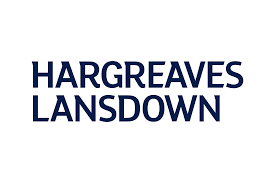Have you paid into different pension schemes over the years? Using the Pension Tracing Service can help you get what you are entitled to in retirement.
Many of us spend our careers working for different companies these days. You might also have breaks in your work history, and these can all impact your pension payments. You could have made pension payments into several schemes over the years. Staying in touch with all the different schemes can be difficult.
However, knowing what you are entitled to in retirement and how to access your pension is vital. After all, we all want to ensure we receive everything we’re entitled to when we retire. According to the DWP, Department for Work and Pensions, there is currently an estimated £400 million in unclaimed pension savings.
To ensure your pensions aren’t unclaimed, you can use the Pension Tracing Service. Here is a look at how the service works.
Maximise your retirement fund with our panel of pension providers. Click on your chosen provider to get started!
What is the Pension Tracing Service?
Most pension schemes have to send you a statement each year outlining your pension pot. But it is possible to lose contact with your pension provider. Perhaps you’ve moved house or weren’t aware you were enrolled with a specific pension scheme.
The Pension Tracing Service can help you re-establish contact with your pension schemes.
The free service is a Government database of over 200,000 workplace and personal pension schemes. When you contact the service, it’ll provide you with the contact details of your pension providers. You can then contact the pension schemes and ask them about your pension.
The service won’t tell you how much money is in your pension, how to access it or provide you with any financial advice or pension advice.
What it does is provide you with is the contact details of the pension provider. You can then contact the provider to find how much you are entitled to in retirement and ask any other questions you may have regarding your pension.
The information below refers to the free service. It’s worth noting that there are paid pension tracking services available. You should start with the free service, as it’s easy to use. It should also provide you with all the information you need to proceed with your queries. But you can always consider the paid services if you are still struggling to find information regarding your private pensions.
What do you need to know before using the service?
You need to have some information at hand before you contact the Pension Tracing Service.
To make the most out of the service, you’ll need to have:
- The name of your previous employer or the name of the pension provider
- Any previous names either of them had - they might have merged with another company or been taken over, for example
- The type of business you worked for
- Information regarding address, such as change of address (you don’t have to know the address, just whether it was changed)
- The period you belonged to the pension scheme
You don’t necessarily need all of the above information. However, the name of either the employer or pension service is something you should know before using the service. The rest of the information can help make the process faster and easier.
How to contact the Pension Tracing Service
You can use the service online at findpensioncontacts.service.gov.uk.
The online form will ask you a few questions regarding your pension. Once you fill out the form, the system will look for the contact details of your pension. You can have the information printed out or emailed to you.
You can also contact the service by phone. The phone number is:
- 0800 731 0193
- +44 (0)191 215 4491 when calling outside the UK
- 0800 731 0176 if you need to use textphone
The number is available from Monday to Friday, from 9.30 am to 3.30 pm.
It is possible to request contact details by post. However, the service is currently unavailable because of the coronavirus.
How to contact the pension provider
Once you receive the contact details from the Pension Tracing Service, you will need to contact the service provider. Different pension providers will have different ways to contact them.
Notice that your pension might be a workplace pension, meaning it’s a scheme run by an employer. Your first point of contact should be your previous employer in these instances. The Pension Tracing Service will provide you details on who to contact.
When you contact a provider, the following details will be handy to have:
- Your date of birth
- Your National Insurance number
- Your pension plan number and when the plan started
You might not have any information regarding the plan. Still, the provider should find your scheme by searching with your date of birth and National Insurance number.
When you contact the provider, be sure to check for an overview of your pension pot. You want to know things like:
- The current value of your pension pot
- How you can access the pension scheme once you retire
- Any charges you are paying for the management of the pension scheme
- The changes you can make to your pension
- The death benefits of the pot – i.e. what happens to your pot if you die?
Make sure to also update your contact details with the pension provider.
Don’t forget to check your State Pension
The Pension Tracing Service will help you find information about your private pensions. But you also want to check your State Pension as you prepare to retire.
You can find information about your State Pension/SERPS on the Government service website.
To access your pension record, you need to know your National Insurance number. The portal will then provide you with an outlook of your National Insurance contributions. You’ll also receive information on how future NI payments could increase your pension.
Take advantage of the Pension Tracing Service
If you are starting to prepare for your retirement, the government tools can be a valuable help. You can get a better idea of how much your retirement income will be. The Pension Tracing Service is also crucial in ensuring you receive all of your pension payments. Make sure to take advantage of the free service when planning for your retirement.







